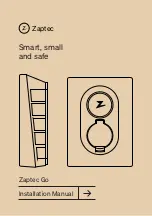
Safety
General information
Depending on where the vehicle is used, it
may be a good idea to have an engine and
transmission guard installed by a corre-
spondingly
qualified
workshop. An engine
and transmission guard can reduce the risk
of damage to the vehicle’s underbody and
engine oil sump, for example when driving
over kerbs, driveways or unsurfaced roads.
Preparing for a trip and driving safety
Observe the following information both be-
fore and during every trip to ensure your
own safety and the safety of passengers
and other road users
→
:
✓
Check that all lights and direction indi-
cators are working properly.
✓
Check the tyre pressure
→
page 339.
✓
Check the fuel level
→
page 28.
✓
Check the coolant level
→
page 321.
✓
Check the washer
fluid
level
→
page 316.
✓
Make sure that you have a good, clear
view through all of the windows
→
page 363.
✓
Air intake to the engine must not be ob-
structed, and the engine must not be
covered by blankets or insulating mate-
rials
→
page 312.
✓
Secure any loads in the stowage com-
partments, the luggage compartment
or on the roof
→
page 260.
✓
Make sure that you are able to operate
the pedals freely at all times.
✓
Secure any children travelling in the ve-
hicle in a restraint system suitable for
their weight and size
→
page 62,
→
page 62.
✓
Adjust the front seats, head restraints
and mirrors correctly in accordance
with the size of the occupants
→
page 44.
✓
Wear shoes that provide good grip for
your feet when using the pedals.
✓
The
floor
mat in the footwell on the
driver side must leave the pedal area
free and must be securely fastened.
✓
Assume a correct sitting position before
setting
off
and maintain this position
while driving. This also applies to all
passengers
→
page 44.
✓
Fasten your seat belt correctly before
setting
off
and keep it properly fastened
throughout the trip. This also applies to
all passengers
→
page 46.
✓
Each vehicle occupant must sit in a seat
of their own and must have their own
seat belt.
✓
Never drive if your driving ability is im-
paired, for example by medication, al-
cohol or drugs.
✓
Do not allow yourself to be distracted
from the
traffic,
e.g. by passengers, tele-
phone calls, opening menus and mak-
ing adjustments to settings.
✓
Always adapt your speed and driving
style to suit visibility, weather, road and
traffic
conditions.
✓
Observe
traffic
regulations and speed
limits.
✓
Take regular breaks when travelling
long distances – at least every
two hours.
✓
Secure animals in the vehicle using
a system that is suitable for their weight
and size.
Driving abroad
In some countries, special safety standards
and legislation apply that may
differ
from
the construction of the vehicle. Before you
travel abroad, it is recommended that you
find
out about any legal requirements and
the following points concerning your desti-
nation country:
✓
Does the vehicle need any technical
modifications
for driving abroad,
e.g. masking or switching the head-
lamps over?
✓
Are the necessary tools, diagnostic
equipment and spare parts available
for service and repair work?
✓
Are there any
qualified
workshops in
the destination country?
42
Safety
Summary of Contents for TOURNEO CONNECT
Page 13: ...Driver door 11 2KF012720AB ...
















































